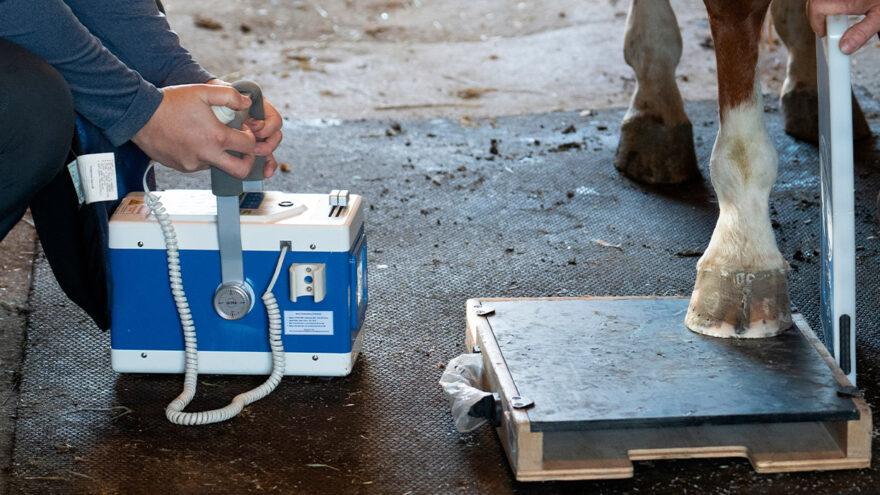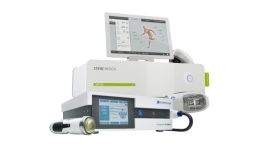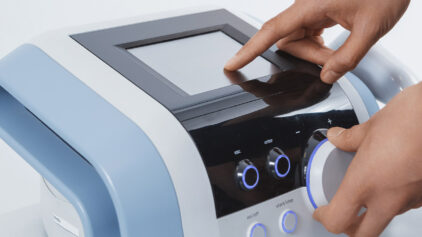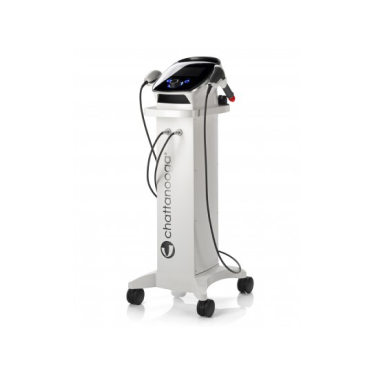Summer is the peak of equestrian competition. Horses compete in multiple events, from high-stakes dressage competitions to demanding endurance events, with little downtime, while also dealing with high temperatures, travel stress, and increased workload. These competitive activities place extraordinary physical demands on performance horses. To help maintain peak performance and prevent injuries, veterinarians now turn to innovative therapies like Extracorporeal Shockwave Therapy (ESWT).
ESWT is a non-invasive method that uses high-energy acoustic waves to deliver high-energy acoustic waves to targeted areas, stimulating healing and offering remarkable benefits – from 50% faster healing of ligament injuries to 90% success in treating back pain. This therapy is especially valuable during the summer circuit, offering drug-free support for musculoskeletal recovery, pain management, and inflammation reduction.
What Is ESWT? A Recap of Its Benefits
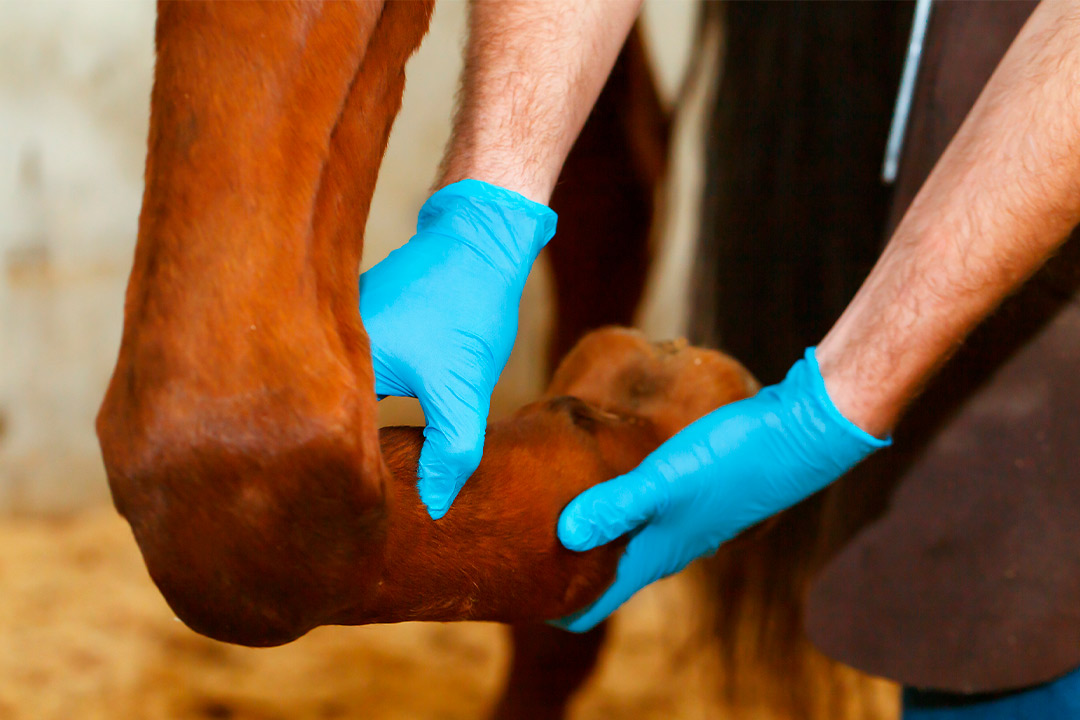
Extracorporeal Shockwave Therapy delivers targeted acoustic pulses into the soft tissues and bones of the horse. These waves create controlled microtrauma that triggers biological repair mechanisms.
Key Therapeutic Effects
Below are the primary biological effects that make ESWT valuable during the summer competition season:
- Increases circulation via new blood vessel formation (angiogenesis)
- Stimulates collagen for tendon and ligament repair
- Reduces inflammation and pain by modulating cytokine levels
- Activates stem cells in soft tissue and bone
Common Conditions Treated with ESWT
The following are the most frequently addressed injuries and conditions in equine athletes using shockwave therapy:
| Condition | Treatment Benefit |
| Tendon & ligament injuries | Speeds tissue repair, reduces scarring |
| Navicular syndrome | Improves circulation and hoof health |
| Back pain | Relieves deep muscle and spinal discomfort |
| Joint inflammation | Enhances mobility, reduces swelling |
| Stress fractures | Stimulates bone remodeling and repair |
Why ESWT Machine Features Matter During Summer Competition
With the physical and scheduling demands of summer events, not all shockwave therapy devices are created equal. The effectiveness of ESWT depends heavily on the machine’s capabilities, especially when treating multiple horses in varied environments. The seven features discussed here play an essential role in ensuring consistent, effective care and faster recovery, giving performance horses the support they need to stay at their peak all season long.
Feature 1: Adjustable Energy Levels for Targeted Precision
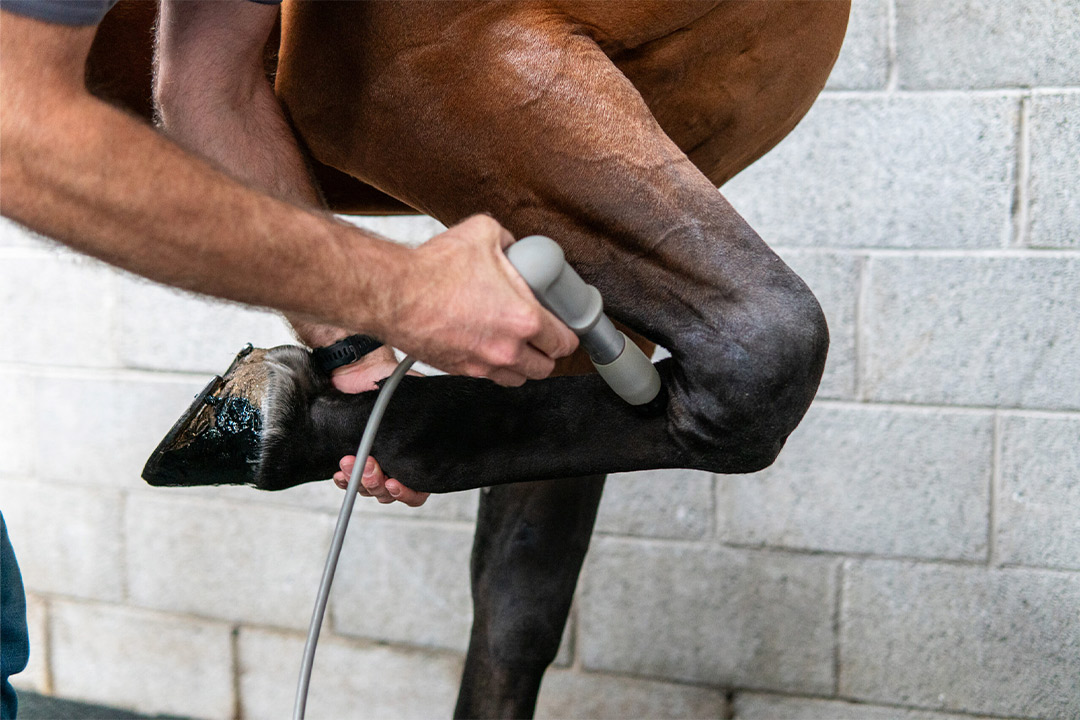
One of the most critical features of high-quality horse shockwave therapy machines is the ability to adjust energy levels. This customization capability allows veterinarians to tailor treatments specifically to each horse’s unique condition and anatomy. Different injuries and body areas require varying intensities of acoustic waves to achieve optimal therapeutic effects. ESWT machines with adjustable energy settings allow practitioners to tailor treatments based on:
- Injury type
- Tissue depth
- Horse’s age or sensitivity
Customizing energy output delivers therapeutic effectiveness without risking overtreatment.
| Injury Type | Typical Energy Setting (mJ/mm²) |
| Tendon inflammation | 0.10–0.15 |
| Deep bone issues | 0.25–0.40 |
| Superficial ligaments | 0.05–0.10 |
Feature 2: Versatile Applicator Heads for Targeted Therapy
The effectiveness of equine shockwave therapy hinges significantly on the ability to precisely target different anatomical structures. High-quality ESWT machines come equipped with multiple applicator heads or trodes, each designed for specific treatment areas and tissue depths for varied anatomical regions. Whether you’re treating a superficial tendon or a deep joint, the right applicator head ensures energy is delivered effectively.
Types of Applicators and Their Uses
| Applicator Type | Best For |
| Flat Trode | Large muscle groups (glutes, back) |
| Focused Trode | Navicular region, joints |
| Radial Head | Surface-level pain, superficial tissue |
Top-tier machines (like the PiezoWave2 or SEPIA) use handpieces with smart contact features that auto-activate upon skin contact, ensuring both safety and accuracy.
Feature 3: Portability and Field-Ready Design
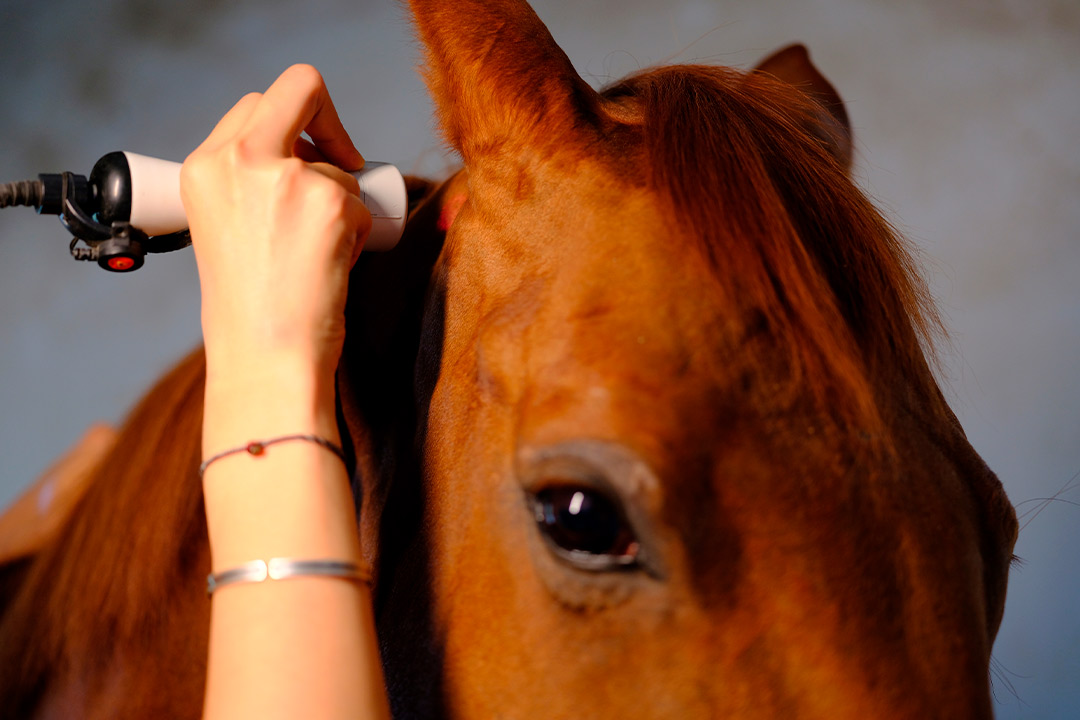
During busy summer competition seasons, Veterinarians and trainers need a field-ready machine to provide immediate therapeutic interventions, which can make all the difference in the horse’s performance and recovery. Portable shockwave therapy machines have become essential equipment for veterinarians treating equine athletes on-site at events.
Look for:
- Lightweight systems (under 15 kg)
- Wheeled transport or backpack models
- Quick setup (under 10 minutes)
- Touchscreen interfaces for intuitive use
The table below introduces leading ESWT models that offer the portability and fast setup times required for field use at competitions and training venues.
| Brand | Weight | Setup Time | Portability Notes |
| BTL-6000 Vet | 12 kg | 7 mins | Wheeled case included |
| PiezoWave2 Vet | 14 kg | 5 mins | Optional backpack carrier |
This efficiency allows for same-day treatment during multi-day events or between training rounds.
Feature 4: Long Battery Life and Dependable Power
Battery performance is a non-negotiable feature when treating multiple horses without reliable power sources. Machines with quick-charge technology and high pulse-count capacity (e.g. up to 5 million shocks per cartridge) deliver consistent results under pressure.
Treatment during busy competitions must meet the following requirements:
| Requirement | Details |
| Treatment Duration | About 1,000 pulses per session, under 5 minutes; multiple areas treated per horse. |
| Battery Endurance | Able to treat multiple horses consecutively without interruption. |
| Durability | Devices like PiezoWave2 can last up to 5 million pulses before needing replacement. |
| Essential Features | Quick-charge, power-saving modes, and battery indicators to avoid unexpected shutdowns. |
| Consistent Scheduling | Horses require 3–6 treatments every 2–3 weeks; dependable power ensures smooth rehab plans. |
The Key Battery Features to Look For
- Minimum 3–5 hours active use time
- Recharge in under 3 hours
- Pulse counters and energy meters
Veterinarians often need to treat 3–6 horses per day at an event and battery life makes or breaks the schedule.
Feature 5: Built-in Safety Protocols
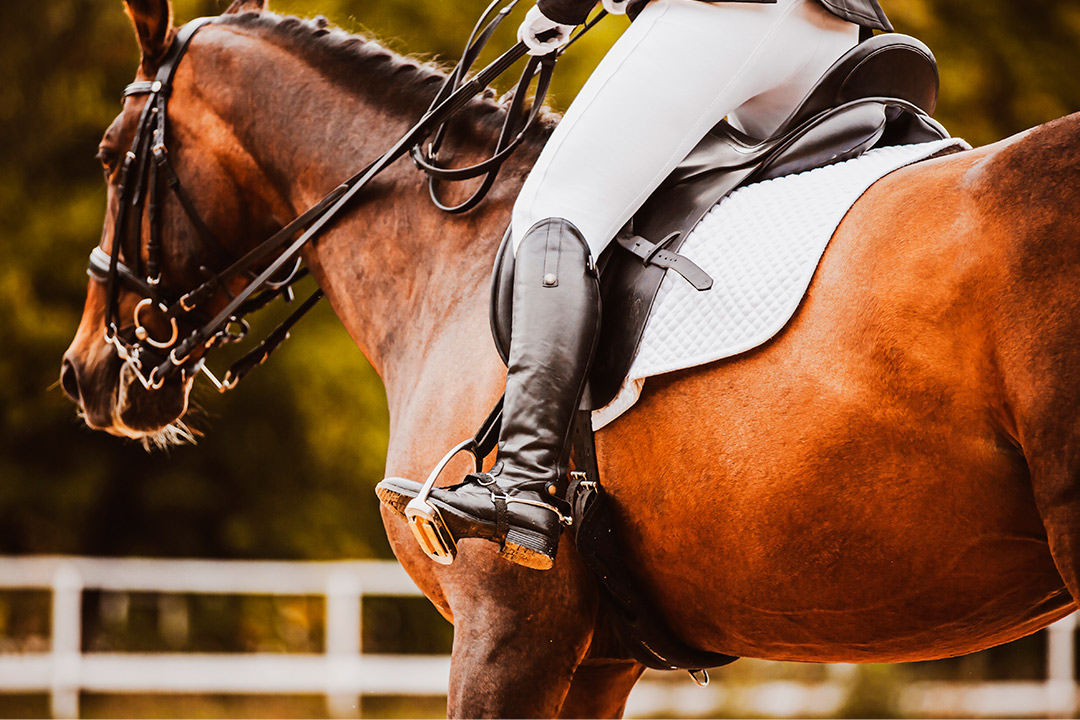
When delivering high-energy acoustic waves to valuable equine athletes, safety becomes paramount. Quality horse shockwave therapy machines incorporate sophisticated safeguards to protect both the animal and the handlers during treatment sessions. High-quality ESWT machines integrate multiple layers of protection to avoid overexposure or tissue damage:
- Soft Shot technology: Limits force for sensitive areas
- Energy lockout systems: Prevent accidental intensity shifts
- Visual and audio feedback: Alerts for incorrect probe positioning
Regulatory bodies (e.g., FEI) also require withdrawal periods of 3–7 days post-treatment, depending on energy levels used.
Feature 6: High Success Rates for Performance Injuries
One of the key features of Extracorporeal Shock Wave Therapy (ESWT) for horses is its high success rate across a range of common equine conditions. From chronic back pain to joint inflammation, ESWT has proven to be an effective non-invasive treatment option. The chart below highlights its effectiveness, with success rates ranging from 50% for collateral ligament injuries to an impressive 90% for chronic back pain.
Success Rates of ESWT for Common Equine Injuries
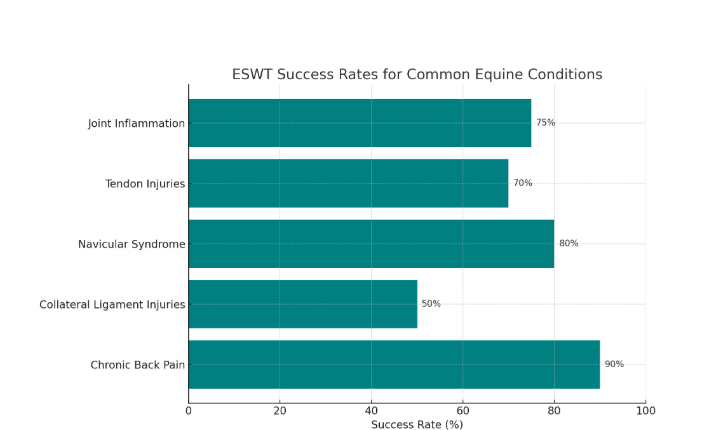
Feature 7: Preventative Use for Summer Conditioning
ESWT is no longer just used to treat injuries. It’s increasingly being adopted as a preventative measure during the competitive season. Forward-thinking trainers now incorporate ESWT into their conditioning programs to keep horses in peak form throughout summer campaigns.
Proactive applications include:
- Pre-season baseline sessions for managing chronic problem areas and old injuries
- Monthly treatments to maintain soft tissue elasticity and prevent strain
- Post-training applications to minimize inflammation before it accumulates
These strategies help reduce injury risk, improve flexibility and mental focus before events, and ease post-event soreness, making ESWT a valuable ally in equine sports conditioning.
The following examples illustrate how preventative ESWT applications can support performance, comfort, and injury prevention throughout the competitive season:
| Preventative Application | Benefit |
| Monthly tendon treatments | Reduces injury risk |
| Pre-event spinal treatments | Improves flexibility and focus |
| Joint maintenance therapy | Reduces soreness post-event |
Investing in the Right ESWT Machine for Summer Success
The summer competition circuit can be brutal on horses and trainers alike. Whether you’re a mobile vet or an elite stable, choosing the right ESWT system gives your horses:
- Faster recovery from injuries
- Lower re-injury risk
- Enhanced comfort and mobility
- Legal, drug-free pain management
Your Next Step: Shockwave Source Leasing or Buying
Get access to premium shockwave therapy equipment with Shockwave Source.
- Lightweight, mobile machines
- Easy-to-use controls
- Leasing and purchase options
Visit Shockwave Source to learn more about veterinary leasing and elevate your equine care this summer.

